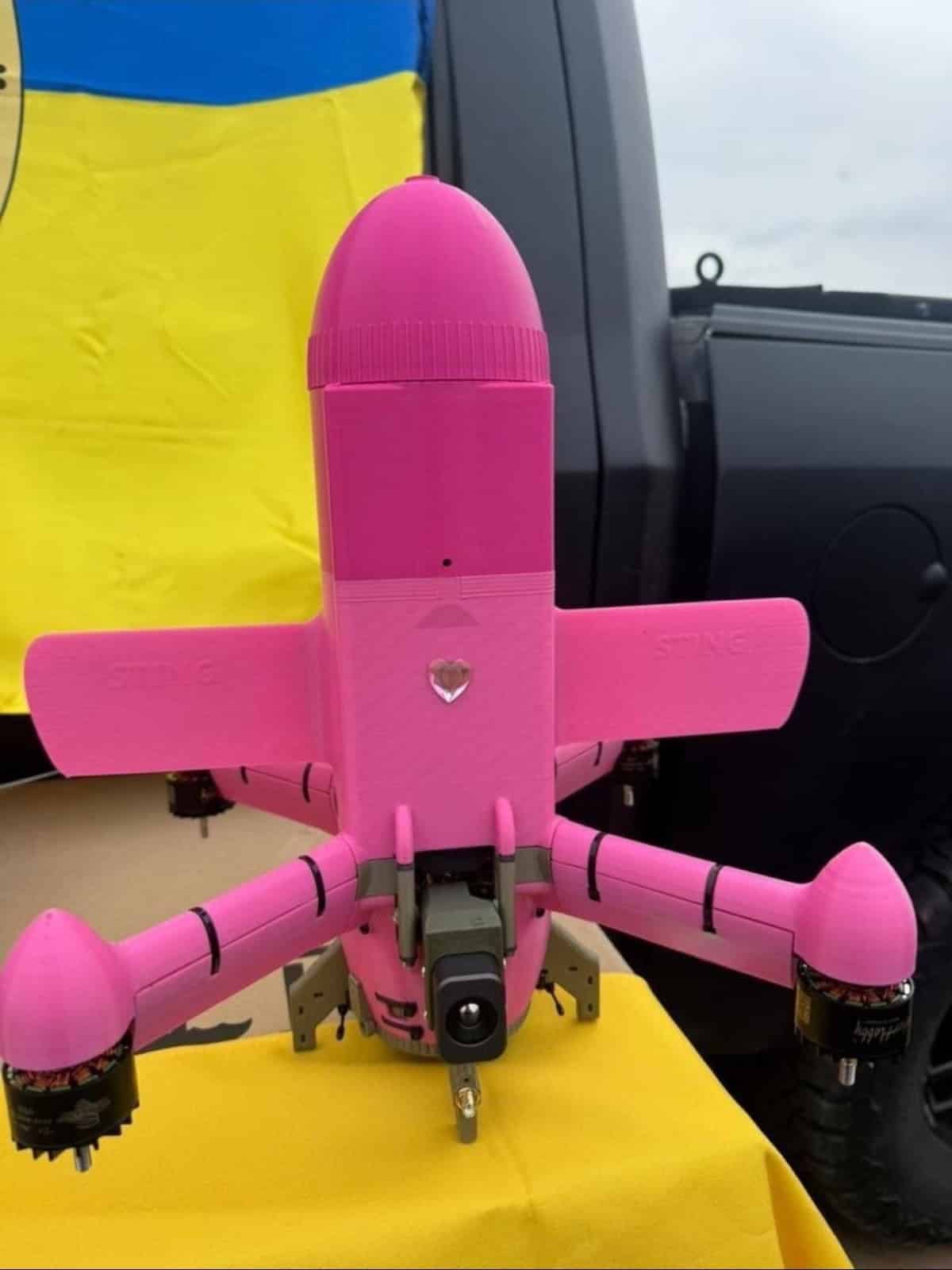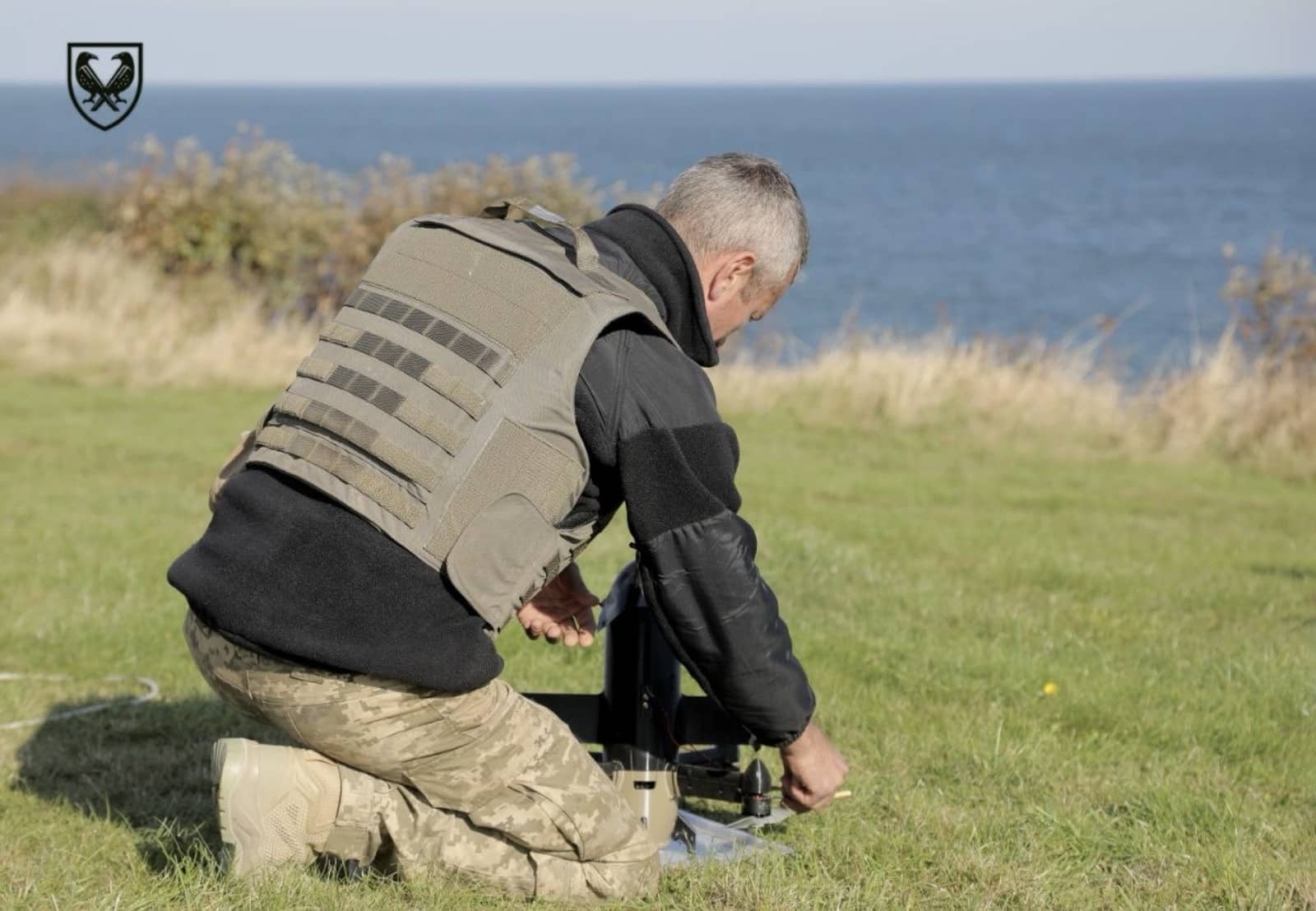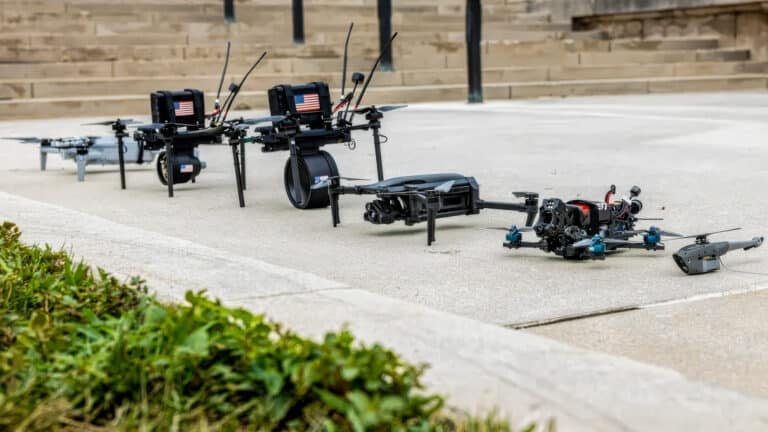Ukraine’s $2,500 Interceptor Drones Are Rewriting Air Defense Doctrine as NATO Scrambles to Learn

What Ukrainian troops dismissed as “Star Wars” fantasy a year ago has become the most cost-effective air defense innovation of the war—and now NATO is racing to adopt the same technology. Ukraine’s cheap interceptor drones are hunting down Russian attack drones mid-flight at a fraction of traditional missile costs, fundamentally changing how modern air defense works.
This isn’t theory. It’s combat-proven reality saving Ukrainian cities every night while reshaping Western military thinking.
From Laughable Concept to Combat-Proven Defense System
When a Ukrainian drone instructor first pitched the idea of flying quadcopters into Russian scout drones mid-air about a year into the war, soldiers thought he’d lost his mind. Too difficult to maneuver, they said. Impossible to hit a fast-moving target. The instructor’s nickname, Yeti, became synonymous with watching too much science fiction.
Fast forward to today, and those “impossible” interceptor drones downed 150 Russian attack drones in a single bombardment. Ukraine now aims to manufacture 1,000 interceptors daily as Russia hurls growing waves of explosive drones at Ukrainian cities.
The desperation driving this innovation was real. Ukraine was running low on expensive surface-to-air missiles, partly due to dwindling U.S. arms support in early 2024, and was relying heavily on truck-mounted machine guns to take down Iranian-designed Shahed attack drones. Those defenses couldn’t keep up. Attack drones slipped through, knocking out power grids and forcing rolling blackouts as temperatures dropped below freezing. Hospitals worked in the dark, often without water, while civilians scrambled to stockpile firewood and coal.

Wild Hornets Sting: Speed and Economics Reshape Air Defense
Ukrainian engineers transformed commercial quadcopters into specialized hunter-killers. The most successful example is the Sting from Wild Hornets, a volunteer-run nonprofit that has become an industry leader through relentless iteration.
The latest version of the Sting screams across Ukrainian skies at 195 mph (315 km/h)—nearly three times faster than the Shahed drones it hunts. Built with a 3D-printed, bullet-shaped frame propelled by four rotors, it carries a warhead and uses thermal imaging cameras to track targets at altitudes up to 10,000 feet (3,048 meters).
Each Sting costs approximately $2,500. Compare that to the $1 million price tag for a single missile in the National Advanced Surface-to-Air Missile System, or even the estimated $35,000 cost of the Shahed drones they’re designed to destroy. Wild Hornets reports their drones have downed more than 400 Shaheds and Gerbera decoy drones.
“The drone itself was very complex to make,” said Alex Roslin, a foreign support coordinator for Wild Hornets. The group has shared videos of the Sting screeching like a turbocar across fields and thermal footage of interceptors racing behind Russian Shahed-style drones, offering glimpses into the high-stakes drone hunting that Kyiv’s defenders perform every night.
Success rates vary dramatically based on pilot skill and conditions. Taras Tymochko, project lead for the Come Back Alive Foundation’s Dronefall program, said hit rates range from 30% for some interceptors to as high as 80% or 90% for the best systems and pilots. “If the drone is not automated, the most crucial part is the skills of the pilot,” Tymochko said. “If the pilots are trained well, if they have lots of experience with drone interception, they demonstrate 9 out of 10 results.”
Only the best drone pilots can master interceptor operations. Yeti, the instructor who first proposed the concept, said his Drone Fight Club school has trained roughly 5,200 students, but only several dozen have completed interceptor exams with their 30% pass rate.
Ukraine Targets 1,000 Interceptor Drones Daily as Russia Escalates
Ukrainian President Volodymyr Zelenskyy announced in July 2025 an ambitious goal to reach production and deployment of 500 to 1,000 interceptor drones per day. “There is a confirmed plan — reaching 500 to 1,000 interceptor drones per day. It won’t be easy,” Zelenskyy said in his nightly address.
The scale of Russia’s drone assault makes this urgent. Last month, Moscow launched more than 800 drones in a single strike, and Western assessments warn the Kremlin could soon send up to 2,000 in a night. In July alone, Russia launched more than 6,000 Shahed-type drones against Ukraine.
Ukrainian Defense Minister Denys Shmyhal emphasized in September that the challenge isn’t producing 1,000 drone airframes—it’s deploying the supporting infrastructure. “It’s a large system; its implementation takes some time. But we are confidently, according to the schedule, moving toward this goal,” Shmyhal said. The bottleneck is ground control stations, radars, and artificial intelligence guidance systems that create the complete interception ecosystem.
Interceptor drones let Ukraine save its expensive missiles for faster, deadlier cruise and ballistic threats while using $2,500 to $6,000 drones against slower attack drones. The economics are brutal and favor the defender for once.
NATO Adopts Ukrainian Tactics in Historic Role Reversal
NATO is watching closely and moving fast to adopt Ukrainian innovations. “Hit-to-kill” interceptor drones are one of the most “promising” solutions for European allies to defend against Russian drones, said Admiral Pierre Vandier, NATO’s Supreme Allied Commander Transformation, who oversees modernization for the alliance.
“Each day, the two stakeholders in Ukraine are learning something and adapting themselves — if they don’t, they die,” Vandier told Business Insider. “The challenge for NATO is to be on this horse, which is going very fast. We need to be on the horse and to drive it properly.”
This represents a stunning reversal of traditional military partnerships. Instead of NATO training Ukraine, alliance members are now learning from Kyiv’s combat experience. The UK announced Project OCTOPUS in September to jointly develop and mass-produce thousands of Ukrainian interceptor drones monthly. The Netherlands committed €200 million ($215 million USD) for joint drone production in October. Denmark hosted Ukrainian specialists who demonstrated the Sting by successfully downing a Danish Banshee training drone during a NATO exercise.

Wild Hornets said their Sting was used to eliminate drones in tests over Danish airspace as the alliance looks for cheaper drone-killers than fighter jets and Patriot missiles, which can cost $1 to $4 million per interceptor.
Russia’s Jet-Powered Counter-Move Sparks Next Innovation Race
The war is a cycle of constant and deadly innovation. Russia’s next move may already be here.
In recent months, the Kremlin has increasingly been launching jet-powered Shahed drones. Dubbed the Geran-3 by Ukrainians, these new loitering munitions are rumored to fly at speeds up to 310 miles per hour (500 km/h)—essentially a piloted cruise missile that’s 100 mph faster than top interceptor drones currently deployed.
Ukrainian Defense Intelligence reports the Geran-3 uses a Chinese-produced turbojet engine allowing speeds of 230 to 310 mph (300-500 km/h) with an operational range up to 620 miles (1,000 km). The jet-powered drone is equipped with jamming-resistant satellite navigation using a 12-element adaptive antenna array, making it immune to the electronic warfare tactics that work against slower Shaheds.
Behind the scenes, Ukrainian engineers are already working toward defenses for what could be the air war’s next phase.
“At this point, nothing is going to be announced. But I think that someday we will find them on the market and all of this will become public,” ComeBackAlive’s Tymochko said. “It’s going to be the next stage of the competition.”
DroneXL’s Take
We’ve been tracking Ukraine’s interceptor evolution since April 2024 when the concept was just emerging from Brave1’s innovation cluster. Watching this technology mature from prototype to NATO doctrine in less than 18 months is remarkable—but it also reveals something deeply broken about Western defense procurement.
NATO spent years trying to bring Ukraine up to alliance standards through traditional training programs and equipment transfers. The brutal reality of daily drone warfare flipped that relationship entirely. Ukraine’s necessity-driven innovation cycle has lapped the Western defense procurement system that typically takes years to field new capabilities. When troops are being hunted by drones every night, you don’t have time for five-year development timelines and congressional budget battles.
The economics here are devastating to traditional air defense thinking. A $2,500 FPV interceptor destroying a $35,000 Shahed drone while preserving a $1 million NASAMS missile for cruise missile threats—that’s not just smart tactics, it’s survival mathematics when facing an adversary launching 800 drones per night. Admiral Vandier put it perfectly: if you fire $1 million missiles at $10,000 targets, eventually you lose.
But Russia’s Geran-3 response shows why this is an arms race, not a solution. Jet-powered drones at 310 mph create an entirely new problem set. Can Ukraine develop interceptors fast enough to catch them? Will AI-guided systems solve the speed gap? How does electronic warfare immunity change the game? The next iteration is already underway in workshops across Ukraine.
The broader lesson extends beyond Ukraine. Every NATO member now benefits from Ukraine’s hard-won combat experience without paying the human cost. The UK’s Project OCTOPUS and Netherlands’ €200 million joint production deal prove the model works—partnering directly with Ukrainian manufacturers delivers better results faster than routing funds through traditional Western contractors. That makes continued support for Ukraine not just morally right, but strategically essential for the alliance’s future readiness against drone warfare threats that aren’t going away.
What do you think? Share your thoughts in the comments below.
Discover more from DroneXL.co
Subscribe to get the latest posts sent to your email.
Check out our Classic Line of T-Shirts, Polos, Hoodies and more in our new store today!

MAKE YOUR VOICE HEARD
Proposed legislation threatens your ability to use drones for fun, work, and safety. The Drone Advocacy Alliance is fighting to ensure your voice is heard in these critical policy discussions.Join us and tell your elected officials to protect your right to fly.
Get your Part 107 Certificate
Pass the Part 107 test and take to the skies with the Pilot Institute. We have helped thousands of people become airplane and commercial drone pilots. Our courses are designed by industry experts to help you pass FAA tests and achieve your dreams.

Copyright © DroneXL.co 2025. All rights reserved. The content, images, and intellectual property on this website are protected by copyright law. Reproduction or distribution of any material without prior written permission from DroneXL.co is strictly prohibited. For permissions and inquiries, please contact us first. DroneXL.co is a proud partner of the Drone Advocacy Alliance. Be sure to check out DroneXL's sister site, EVXL.co, for all the latest news on electric vehicles.
FTC: DroneXL.co is an Amazon Associate and uses affiliate links that can generate income from qualifying purchases. We do not sell, share, rent out, or spam your email.



















Combined with hundreds of locally produced Sky Sentinels ($100k ea.), mixed with a few score more expensive foreign made systems (short range guns like German Gephards ($1.8M ea.), German SkyRangers ($10M ea.), and others and mid-range SAMS like Aussie Vampire ($2.8M ea.)), and they will close the sky to Russian drones which Zelensky recently described as a goal.